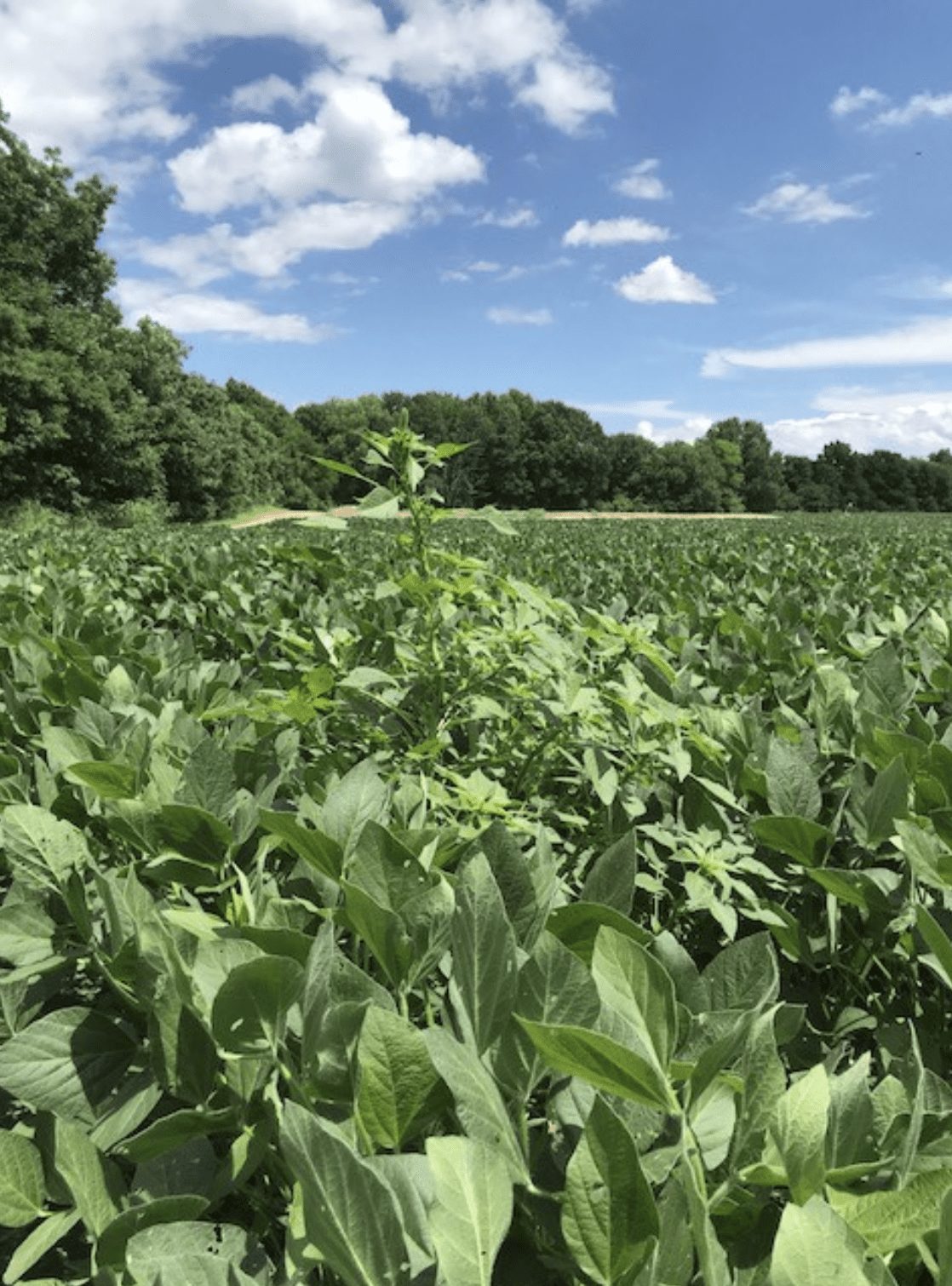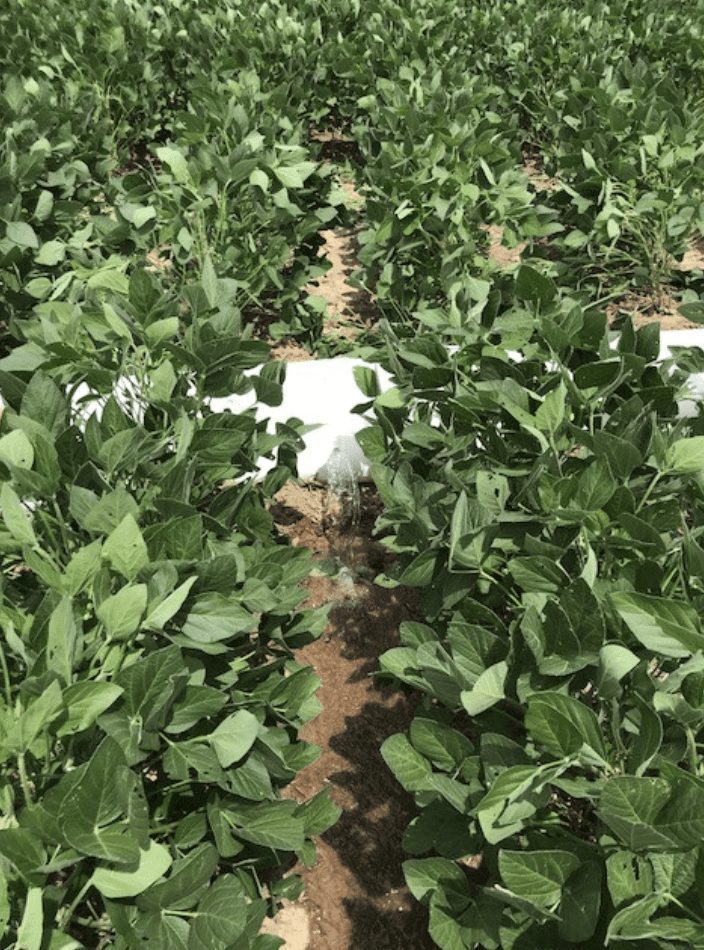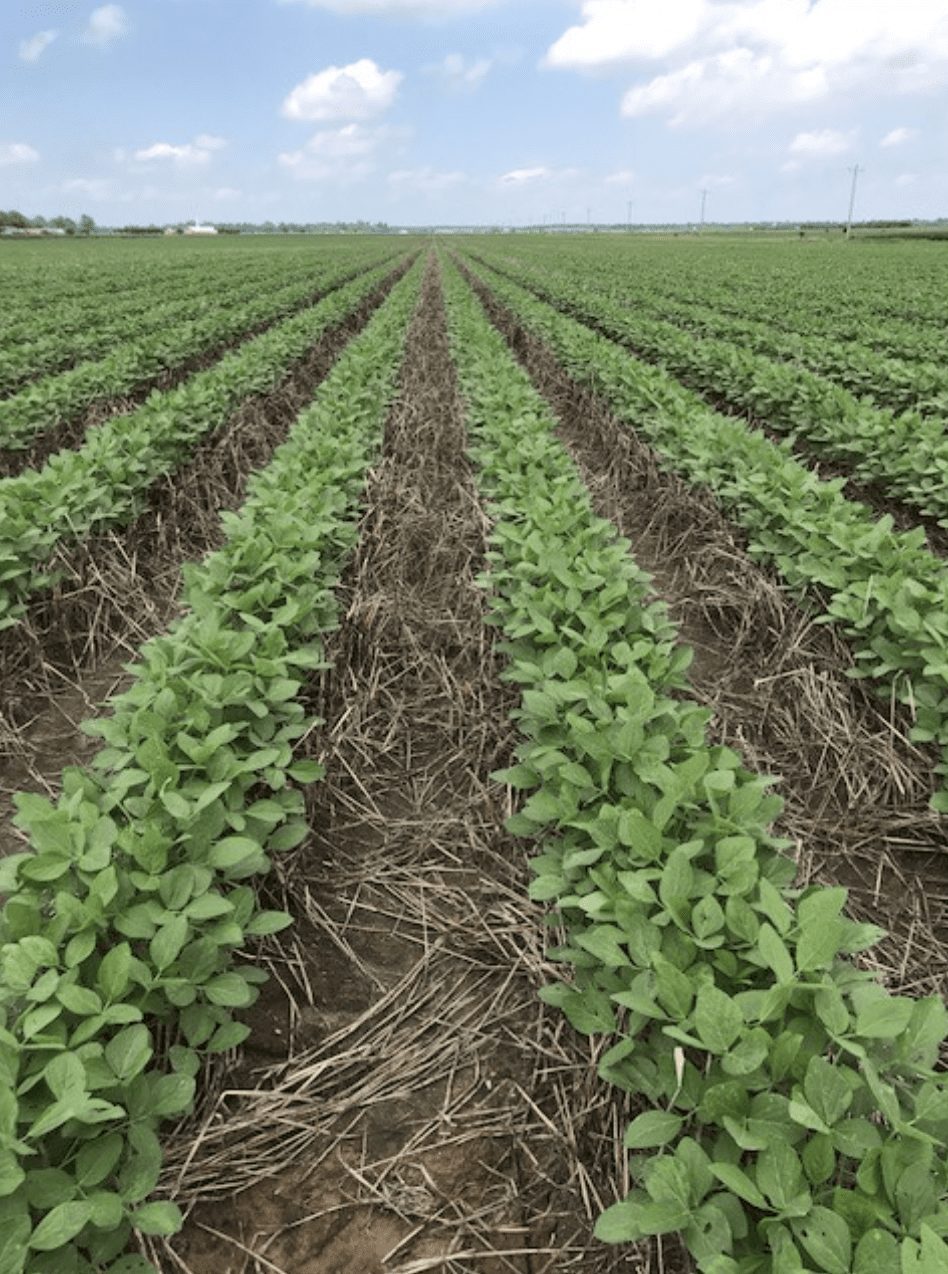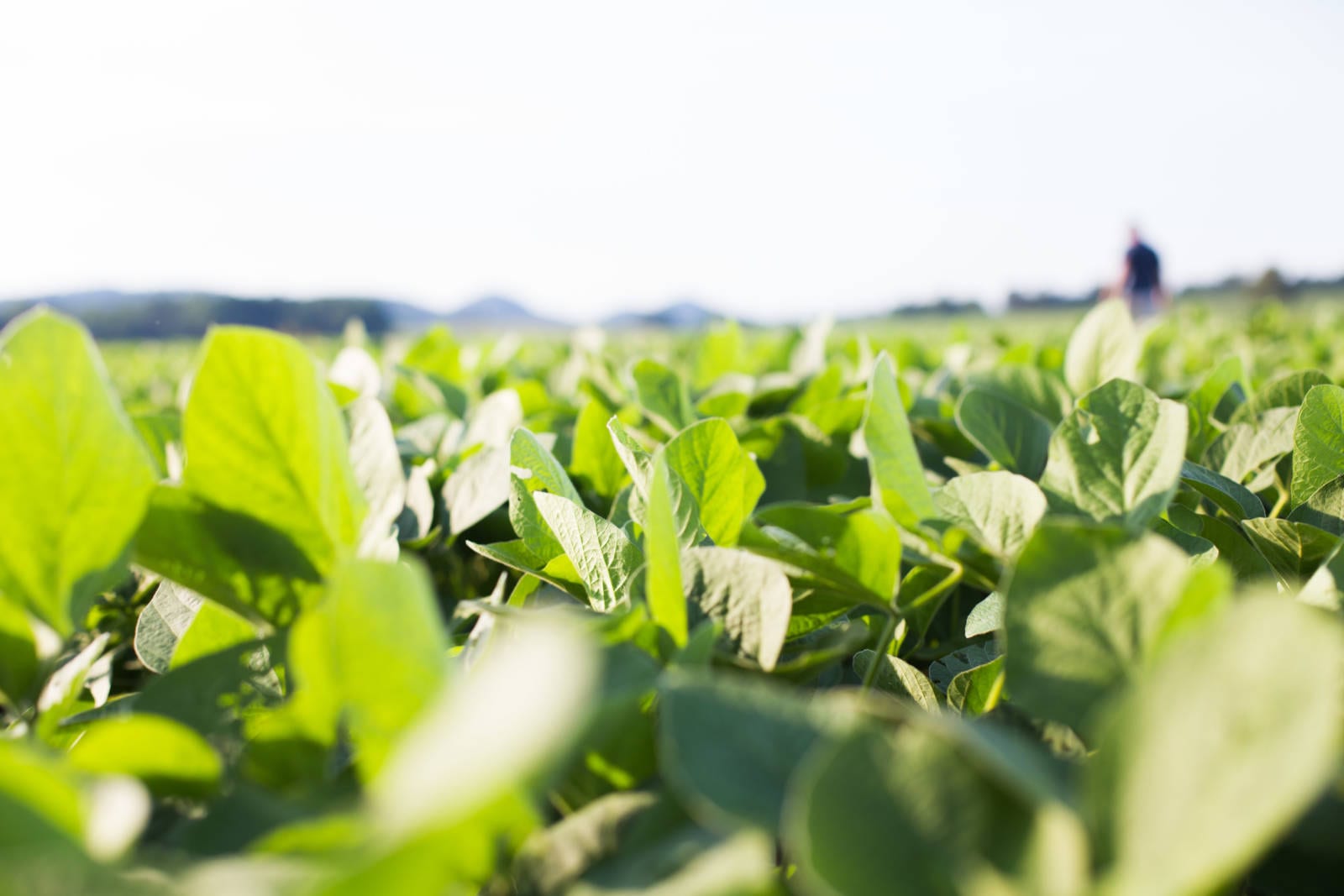USSEC Chairman Gives Updates Throughout the Season, Part Two: Management
Derek farms soybeans, rice, corn, cotton, grain sorghum and wheat with his wife, Shannon on their farm in Newport, Ark.
The soybeans are looking sturdy on my farm in Arkansas. In the southern United States where I live, if you don’t get flooded out during the start of the season, you pretty much know exactly what kind of soybean yields you are going to have. And our beans look just like we like them to.
It has been incredibly hot — the heat index today is 107 degrees Fahrenheit (42 degrees Celsius), and we have only gotten a half an inch of rain in June. But that’s just summer in the South: hot, dry and windy. Those conditions make irrigation a big deal, and why in the last update, I said I spend most of my time doing it. You start managing your crop for weeds, pests and water once you get a stand (when the soybeans stand up on their own), and from there it’s about maintaining a healthy stand.
Fighting Weeds
Keeping the soybean stand healthy can mean a lot of different things. For us, we constantly battle with Pigweed. Because Pigweed is resistant to almost all herbicides, we have chopping crews come out and take care of the weeds by hand, removing the ones we cannot kill with herbicide. You don’t want the weeds to spread their seeds and let more grow, so hand removing them is the best option.

Tackling Disease
For fungicides, we are taking a different approach this year than we have in years past. Last year we had a lot of problems with target spot, which is a common soybean disease caused by the fungus Corynespora cassiicola. This year we are going to handle that blight preventatively. Right now, with the beans beginning to pod, we are at growing stage R3. This is the time to spray fungicide.
We need to spray now as our beans are not yet to the point where they are lapping. Soon the plants will form an overlapping canopy. When beans canopy, it prevents sunlight that encourages weed growth from getting in between rows, but the canopy also prevents any spraying from getting to the base of the plant where it’s effective. Once beans have hit this point, we can only continue to irrigate.
We are going to spray all our acres for target spot this year. Doing this will be more expensive up front, but I believe it will help me produce the healthy product at a familiar premium. Our goal is to produce a high-yielding, high-protein crop. We think this investment in preventative spraying now will allow us to have a better harvest and get the beans to dry down (to get to market-approved moisture levels) a little faster.
Managing Water
R3 is also a critical time for water management, as drought can affect pod formation. I have always believed that water is our solid gold resource, so we try to be on the cutting edge of efficiency with our water conservation and irrigation. I pick up water from my rice fields and put it on my soybean fields. We created and operate reservoirs. We monitor and control our water use with our smartphones, and we have flow meters hooked up to let us know how much we are using. I have a competition going with neighbors this year on who can use the least amount of water to get the highest yielding crop. As farmers, what do we have if we don’t have water and good soil? This is more than winning a contest for me — it’s an opportunity to learn how to better manage my water for years to come.

Pursuing Improvement
Beyond water and weeds, we will walk the fields — two hours a day, five days a week — looking for worms, stinkbugs and diseases to keep the stands we’ve got healthy for the rest of the season. Corn harvest starts around August, so come July, we will begin pulling out our harvest equipment to make sure it is running correctly. There is always something to manage and actively pursue to make your farm better.

